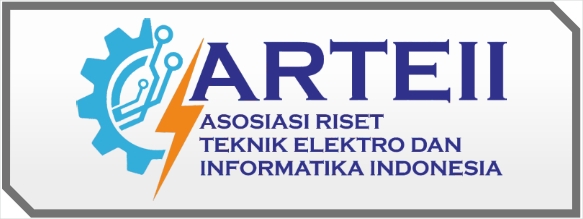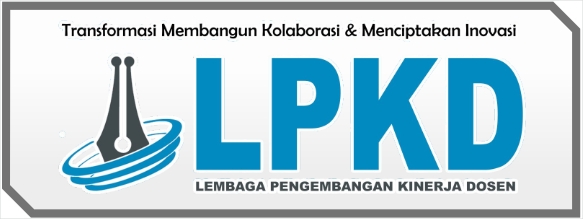GREENHOUSE GAS EMISSIONS IN AL AMIN LIVING LAB AND INDUSTRIAL PARK PLANNING
DOI:
https://doi.org/10.55606/icesst.v2i1.254Keywords:
Industrial Park; Planning of Al Amin Living Lab; PSE-GR DevelopmentAbstract
The impact of carbon emissions as a major cause of climate change has raised concerns and become a challenge for the international community. To reduce emissions, it is necessary to study the carbon footprint of activities in Al-Amin. The planning of Al Amin Living lab and Industrial Park along with the administration in which various activities produce carbon emissions these activities need to be calculated to find out how much the activity contributes to the emissions produced so that negative impacts on the environment can be minimized. Opportunities for PSE-GR Development Areas with the concept of Eco-Tech-Edu Tourism which has an understanding of Circular Economy Education (CED) is still very minimal in North Sumatra, PSE-GR can be a pioneer in spreading this understanding of CED where the integration of economic and educational activities occurs which at the same time helps maintain the preservation of nature. Encouraged by the development of the Independent Learning Curriculum (ILC), it is hoped that PSE-GR can become a place for research, service, and practicum of the UNPAB academic community that increases awareness of the need for nature conservation. Because Green Technology from across fields of science is still very minimally discussed and is still often partially researched, UNPAB can be an example of the integration of fields of science that become practical, dynamic, educational, and economic value innovations. The existence of 20 ha of land owned by the Prof. DR H Kadirun Yahya Foundation, it is hoped that UNPAB can develop a Living lab ecosystem at least on 10 ha of land. PSE-GR is not expected to be as exclusive as tourist areas in general, with the concept of CED, PSE-GR will not only help become an income generator & source of educational land for the academic community but also help the welfare of the village and the surrounding community. Carbon footprint studies are carried out in 3 scopes according to The Greenhouse Gas Protocol (GHG Protocol), namely emissions from sources owned or directly controlled by the faculty, indirect emissions from electricity consumption, and other indirect emissions (WRI and WBSCD, 2004). Carbon footprint emissions from all three scopes are calculated based on methods from the International Panel on Climate Change (IPCC) for the national greenhouse gas (GHG) inventory.
References
A. Fauzi, Valuasi Ekonomi dan Penilaian Kerusakan Sumberdaya Alam dan Lingkungan, 1st ed. Bogor: IPB Press, 2014.
Alftisi, M.A., et.al. (2019). Ecological Characteristics Study of the Vegetation Cover for the Protected Area Faculty of Agriculture at the University of Tripoli-Libya. Budapest International Research in Exact Sciences (BirEx) Journal Vol 1 (4): 62-69.
Bo’do, S., Siahaan, H., and Ida, R. (2019). Social Media, Public Sphere and Movement Discussion of Urban Farming in Indonesia. Budapest International Research and Critics Institute-Journal (BIRCI-Journal) Vol 2 (3): 250-261. BPS. 2021.
Fadliah. (n.d.). Pemanasan Glogal, Faktor Penyebab, Dampak dan Solusi. Manajemen Pendidikan, 1-15. Prayogi, U., & Sugiono , R. (2022). Analisis Global Warming Potential (Gwp) Dan Ozone Depletion Potential (Odp), Pada Refrigeran R32, R290, R407c, R410a, Sebagai Pengganti R22. Jurnal Teknik Mesin, 14-20
Suswati, et. al. (2020). Integrated Control of Coffee Bean Borer (Hypothenemus hampei) on Sigararutang Coffee, Motung Village, Ajibata Sub- District, Toba Samosir District, Sumatera Utara. Budapest International Research in Exact Sciences (BirEx)Journal Vol 2 (1): 52-61.
Suswati, Hutapea, S., and Indrawaty, A. (2020). Empowerment of Farmer Community Group in Sampali Village Together with Students of Agriculture Faculty Medan Area University in Barangan Banana Plants Development with Tissue Culture Banana Seeds, Suckers and Applications of Mycorrhiza. Budapest International Research in Exact Sciences (BirEx)Journal Vol 2 (2): 119-124.
UNEP (United Nations Environment Programme), (2009.). Converting Waste Plastics Into a Resource, Division of Technology, Industry and Economics International Environmental Technology Centre, Osaka/Shiga
UNEP (United Nations Environment Programme), (2009.). Converting Waste Plastics Into a Resource, Division of Technology, Industry and Economics International Environmental Technology Centre, Osaka/Shiga















